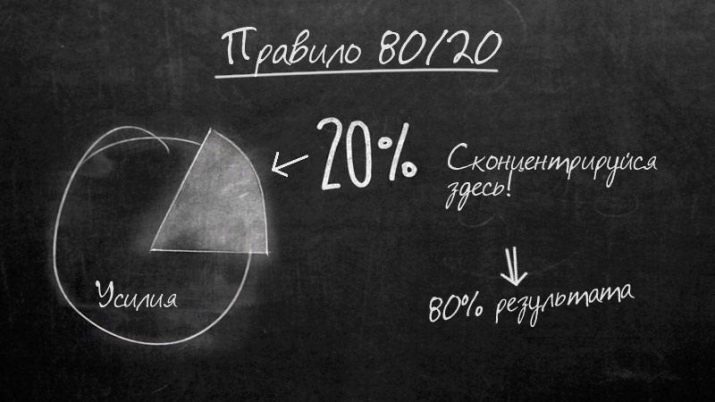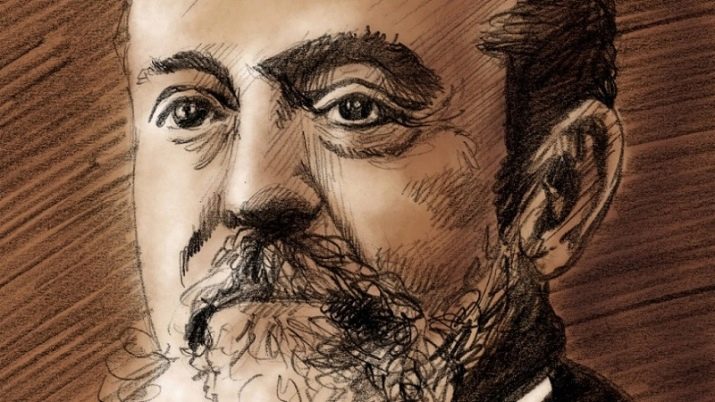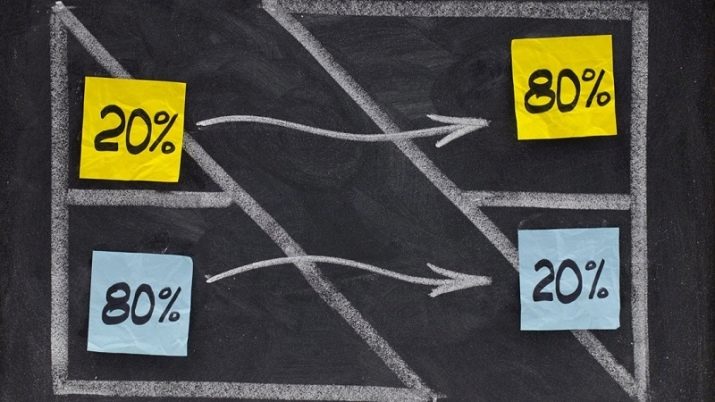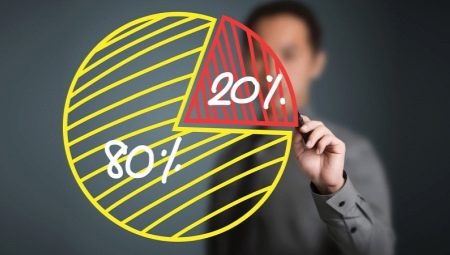Recently, in psychology, in economics, in the field of self-development, as well as in other areas of human life, the Pareto law has gained great popularity. This rule allows a person to spend a minimum amount of effort, but to get the maximum result. Moreover, this formula works both in the forward and in the opposite direction, therefore, often devoting a huge amount of time and effort to a particular task, we get a very small effective return.
What is it and how to apply the rule in real life? How did the Pareto principle come about? Who is the author of this law? Read more about this in our material.

What it is?
The Pareto principle is a law that will help you establish the level of effectiveness of what you are doing. Often the Pareto principle is also called the 20 by 80 rule. If you try to explain the Pareto law in simple words, its essence is that 20% of your efforts bring 80% of the result and vice versa: 80% of the efforts give only 20% of the total result. This theory allows you to give preference to the most effective resources that will bring the greatest result, thereby not wasting your energy and time. The Pareto effectiveness system is very popular in psychology.
The author of this law is an Italian economist. He identifies several sources and methods of manifestation of the principle. Let's consider some of them:
- This principle has proved to be quite effective in practical work due to the fact that a fairly large number of factors are just common, among them, there are only a few that are important for our life;
- a significant part of the forces applied to the solution of the problem does not give us the desired result;
- the visible part of life is not always full, because often there are a large number of details and moments hidden from the person;
- usually our plans are not true, since no matter what we planned, as a result, in most cases we get a different result;
- a large volume of our activity does not lead to a direct result, but is just a waste of time.
The Pareto principle has a serious scientific justification, and is not just built on guesswork and reflection.

History
The effect of 20 to 80 was named after the author of this law - the Italian scientist Wilfredo Pareto (1848–1923). By his occupation, he was an economist, so the invention of the formula was accompanied by the derivation of coefficients, the construction of graphs and histograms. A popular principle to this day has been seen in the process of studying the financial and economic situation of the inhabitants of England at that time. In the course of his research, the economist Vilfredo Pareto noted that all the country's money (as well as other material goods) were distributed unevenly among the citizens of England. Moreover, such a bias arises in such a way that most of the money is in the possession of fewer people and vice versa: less material wealth is distributed among the majority of the people. Thus, the basic ratio is not equivalent.
If you go into the details of the Pareto study, it can be noted that he found 2 main criteria.
- Only 20% of all material wealth belongs to 80% of people, while 10% of the population accounts for 65%, and 5% - 50% of material wealth. Such a distribution suggests that the country's economic system is heterogeneous.
- The second criterion, identified by Pareto, states that such a situation is characteristic not only of the English economy. The 20 by 80 principle can be applied in any country and in any given period of time. And also the law is relevant not only for the economy, but also for other areas of activity.
Based on such a complex and large-scale work that was done by a scientist, a special schedule was simulated and built under the name "Indifference curves." The main goal of this chart is to display how many products a person can refuse to buy one clearly defined product.
And also Wilfredo Pareto invented an innovative factor that helps determine the level of human well-being. It lies in the fact that the increase in financial and material benefits in itself is a rather positive phenomenon, since at the same time some people are in the win, but at the same time, losers cannot be called. In order to achieve an optimal economic (or any other) state, it is necessary to achieve a situation where the redistribution of material goods allows you to improve the condition of one particular person, but at the same time this fact will not negatively affect the condition of another.

Application and examples
To date, the Pareto law has been successfully applied to solve a particular problem, to make decisions in various areas of human life: in sales, in management, in trade, in time management, in the economy. One way or another, but the law implies its unquestioning implementation. Consider ways to improve your own life using the Pareto law.
Language learning
Learning a new language is the goal of a fairly large number of people. At the same time, for many, it may seem unattainable even despite the fact that knowledge of a foreign language can advance a person in both professional and personal life. If we look at the statistics, we must understand that on average one language contains about 1 million words. Accordingly, it is rather difficult to study such a quantity of new information.
However, if we are guided by the Pareto principle, we can conclude that knowledge of absolutely all the words of one or another language is completely optional. It is important to know only a few hundred or thousands of basic words that are used more often than others. Thus, the task of learning a foreign language becomes much simpler. And if you master such a small volume of words (20% of the total), you can communicate at a fairly high level with the speakers.
Learning just a million words, on the other hand, is a rather unproductive activity, as you will most likely not use most of them. You will only lose a lot of energy and energy for activities that will not bring you much benefit.

Personal effectiveness
Everyone is trying to become a better version of themselves: to read many books, plan their day correctly, successfully achieve goals. However, often we set impossible tasks for ourselves, and during attempts to improve ourselves, we feel a sense of burnout, as a result, we refuse to achieve our goals at all. At the same time, if you know the Pareto principle and skillfully apply it, then you can avoid such situations. For instance, Instead of reading 10 books a month, set yourself the goal of reading only one. Thus, you will get rid of unnecessary stress and gain much more knowledge than if you tried to read everything at once.
You will remember the information from one read book much better, and you will be able to put the acquired knowledge into practice.

Food
Many dream to start eating right, go on a diet or stop snacking late at night, but not everyone succeeds. The thing is that most people try to fix their meals at a time: refuse all sweet, starchy and fatty. Such drastic measures often cause disruptions. At the same time, if you wisely approach the process of changing your diet, using the Pareto principle, you can achieve your goal in the shortest possible time and without much effort. So, you just need to change your diet by only 20%.
In this case, it is important to determine which foods you stop consuming. So, supporters of paleo-diets often refuse dairy and flour products, vegetarians - from meat, you can still refuse sweet or fatty, and so on. In this case, you do not have to sit on strict and restrictive detox diets or spend a lot of money on expensive products.
Change only 20% of your diet, and you will get 80% of the desired result.

Sport
The Pareto principle is also suitable for those who want to include regular sports in their lives. However, in order to get in shape, lose weight and build muscle, it is not necessary to exercise every day, spend money on subscriptions to the fitness room, and lift heavy weight. As with other areas of life, in sports you need to change only 20% in order to achieve maximum results. For example, instead of a daily hourly workout, you can do an easy 20-minute run.
In this way, having spent a very small amount of energy and effort, you can get an impressive result. At the same time, it is recommended to combine sports with a review of your diet according to the principle described above.
In addition, one should not expect the onset of noticeable results immediately - for this you need to wait at least a month. However, after 30 days, you will notice impressive changes and want to apply the Pareto principle in every area of your life.

Own business
Starting your own business is a rather difficult task, which requires a lot of time, money, energy and personal effort. However, even giving all the best to 100%, it is far from always possible to notice the desired result. That is why experienced businessmen advise newcomers to pay attention to the Pareto law, which is becoming increasingly popular in the business sector.
If you follow all its principles, then to get 80% of the result, you will need to make only 20% of the effort and vice versa: 80% of the effort will bring you only 20% of the result. Using the Pareto law, you will save yourself from unnecessary work, respectively, from unnecessary stress, and free up a lot of time for activities that bring you pleasure (hobbies, hobbies, relaxation, socializing with family, walking with friends, traveling).
Entrepreneurs who have already managed to apply the Pareto law in business, report great success. So, only 20% of leads bring 80% of sales and only 20% of content brings 80% of traffic to the site. Pareto law is applicable in many areas of human life. It is very popular among those people who want to increase their efficiency and productivity, while not spending a lot of strength and energy.

Difficulties in using the principle
The most basic difficulty in the process of using the Pareto principle is the determination of those very 20% of cases that will lead to 80% of the result. For example, if you maintain your own blog and strive to attract a large number of visitors to your site, then the question remains as to what 20% should be paid maximum attention to and what issues you can refuse to cover. If you apply the rule in sports, then how do you know which exercises will make your body stronger and more muscular: squats, push-ups or pull-ups?
Unfortunately, neither the Italian economist Wilfredo Pareto nor the formula he invented provide a direct and understandable answer to this question. It turns out that the application of the Pareto law is a kind of roulette, since you can only understand its effectiveness by trial and error. Moreover, it is important to think through all your steps in advance and strategically plan your action plan. This is especially true for those people who plan to apply the principle in the process of developing their own business.
The thing is that reckless actions and refusal to perform 80% of the work can lead to major problems in your company or even to its collapse and bankruptcy.

Could it not work?
Despite the fact that the Pareto principle is very popular, and has repeatedly managed to prove its effectiveness and truthfulness, there are still skeptics who do not believe in the operation of the theorem. Let's talk about whether such a situation may arise when the Pareto principle will not work.
Without unnecessary preface, we immediately say that such a situation may arise, and in some cases the Pareto principle will not work. But this fact in no way detracts from the importance of the discovery of the Italian economist or its significance. The thing is that even despite the fact that the Pareto principle is suitable for all areas of human life, it will not always work absolutely identically. For example, differences can be observed in business, sports, and self-development. In this regard, when planning their actions, scientists advise to be guided not only by the Pareto principle, but also take into account other, more tangible data (for example, statistical information).
The Pareto law itself is a rather controversial and controversial theorem. On the one hand, there are a large number of people who claim that the formula really works and can lead you to the best possible result. However, on the other hand, one can often find opinions that the Pareto law is real nonsense and a fiction that it is not applicable in real life.
One way or another, you can try to independently apply a similar formula in your personal life (in the field of self-development, dietetics of sports or business) and see for yourself, by your own example, its effectiveness by adding your unbiased opinion about it.











